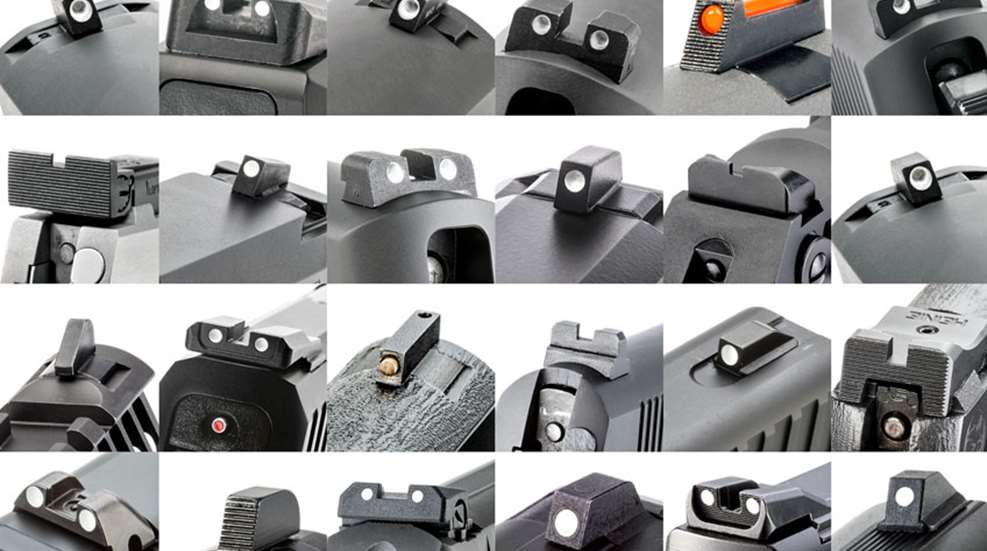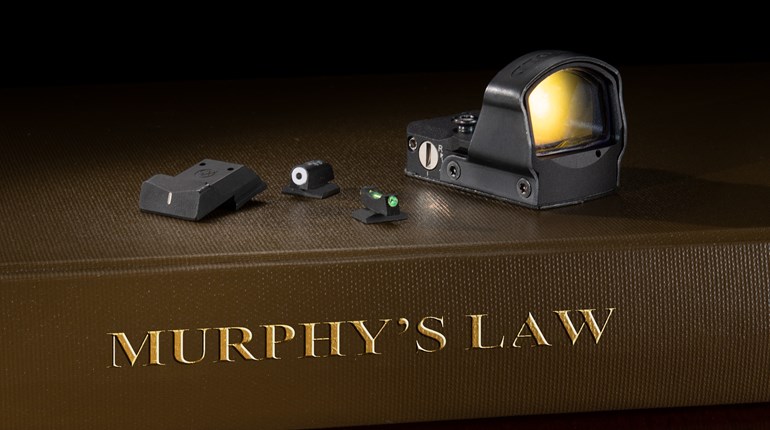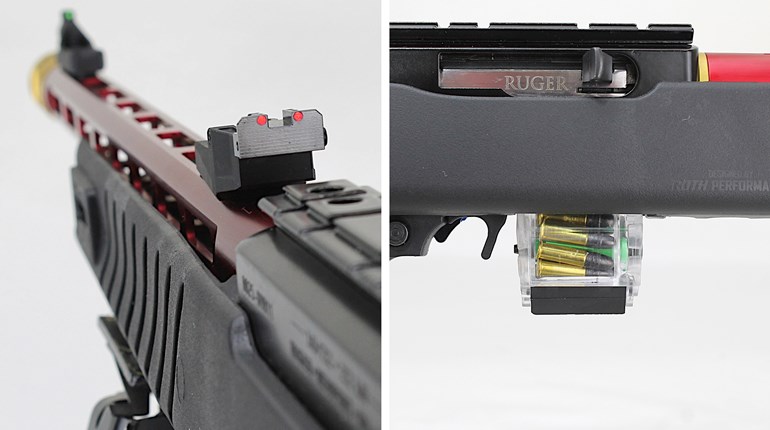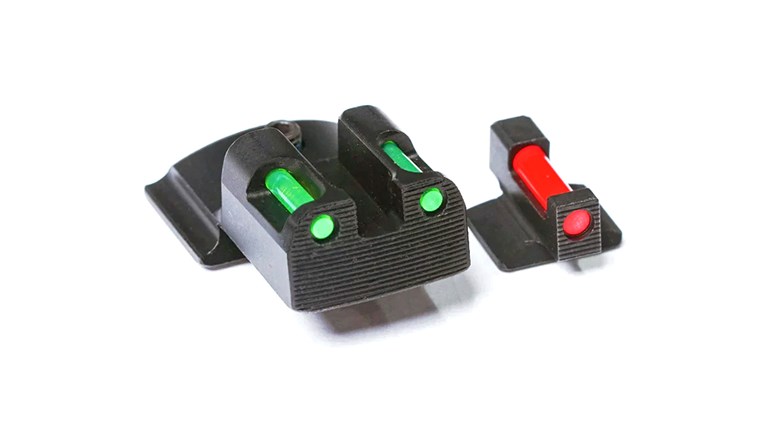
With the increasing use of miniaturized red-dot sights, or “MRDS,” mounted on handgun slides, we’ve been treated to a chorus of “But what if it breaks/dies/falls off the gun?” from traditionalists. The glib response is “Well, that’s why we have backup irons on the gun,” but even that’s not the complete answer.
The very term “iron sights” conjures up mental images of massiveness and solidity; objects as hard to miss visually as Gibraltar and as hard to break as an anvil. The truth is occasionally quite different.
The pistol with probably the largest catalog of aftermarket sight solutions in the U.S. is the Government Model M1911-pattern pistol. There are two reasons for this: The first is that the pistol was super common, being our nation’s service handgun for so long. The second is that the original USGI M1911 factory sights are hot garbage.
The front sight is the approximate size and shape of a botched fingernail clipping; a half-moon shape, skinnier than a dime and barely protruding above the slide by a small fraction of an inch. In order to get a sight picture, you were supposed to take this sliver and center it in a notional notch in the vestigial rear sight that was sized as though it had been put there by someone who really didn’t want to.
Commercial Colt pistols had better sights, and aftermarket solutions to the tiny sliver of a front sight abounded, especially once we got to the era of popular tritium night sights in the 1990s. The problem was in how the original M1911 front sight was attached.
See, that little sliver of metal had a sort of crescent-shaped base, and that base went into a longitudinal, crescent-shaped cut in the 1911’s slide. Because this cut was oriented fore-and-aft, something needed to be done to keep the sight from flying out of it. That something was to have a small post (or “tenon” in technical terms) protruding from the bottom of it. This tenon stuck through a hole in the bottom of the cutout for the sight so that the bit that stuck through could be beaten flat with a hammer (the technical term for this is “swaged”) to retain the front sight on the slide.
As front sights got bigger, the tenon began to get put under more strain. A slide moving rearward under recoil generates rather a lot of G-force, and the tenon on the original USGI sight was only .055-inch in diameter. Put a sight fat enough to hold a tritium vial on that teeny-tiny tenon and it’ll snap in a hurry. In the 1980s, Colt switched to a .125-inch tenon to cut down on front sights getting spit off under recoil. Fortunately, this was just in time for the rise of the mass-market tritium night sight.
Meanwhile, the companies selling improved front sights were also selling improved rear sights. In addition to having the most notional of sight notches, the 1911’s rear-sight dovetail was set forward of the rear of the slide by a significant fraction of an inch. If you’re trying to improve a pistol’s sight picture, then increasing the sight radius, or the distance between the front blade and rear notch would seem to be an uncontroversial way to do so.
So the new variety of “combat-style” rear sights for the 1911 would protrude up from the dovetail and then cantilever rearward, leaving the rear-sight notch about even with the aft edge of the slide. The most-popular versions of these sights were by Novak and Heinie, and featured thick sight bodies that gradually tapered down to the dovetail cut in the front. These were billed as “no-snag” sights, and people were quick to point out that they were no-snag in the wrong direction. Sure, they were smoothly sloped from the dovetail up to the rear notch, but that wasn’t the direction that would snag on the draw.
Furthermore, this construction precluded snagging the rear sight on the belt or boot heel to run the slide in one-handed operation. Later models of sights would correct this by milling a step into this area. Unfortunately, this can leave a thin metal bridge to connect the fat rear-sight blade to the fat dovetail in the slide. In some designs, this can actually cause the sight body to fail at this narrow spot, as happened to an AmeriGlo rear on my Smith & Wesson M&P9. It was bad enough that it happened on the first string of fire of a Cornered Cat Instructor Development Course, which I had flown clean across the country to take. It would have been far worse if it had happened while using it for real. I now routinely inspect this area on sight bodies for stress cracks.
Perhaps the most-common weak spot on modern iron sights is the front sight on the Glock. It’s meant to be easy to change with a simple tool, being secured by a nut that fastens to an extension passing through the slide, similar to the tenon on a 1911 sight. In fact, many buyers eschew factory-upgraded night sights on the Glock and instead buy the inexpensive, entry-level plastic ones with the intent of pitching them in favor of a preferred brand of aftermarket sights as soon as they get home.
The problem arises here if the replacement sight is not snugged tight all the way and secured with thread locker. If the front sight has pretty much any play at all, it will get spit off the gun in a surprisingly small number of rounds, especially if it’s a heavier front sight like an XS Sight Systems Big Dot or a tall suppressor-height model. Follow the instructions and snug that stuff down.
We’ve come a long way from that useless, miniscule blade on the original M1911s. A surprising number of sight manufacturers have emerged offering very serviceable products, and gunmakers have moved to standardizing sight cuts. Do whatever you need to keep these nice, big new sights in place.





































